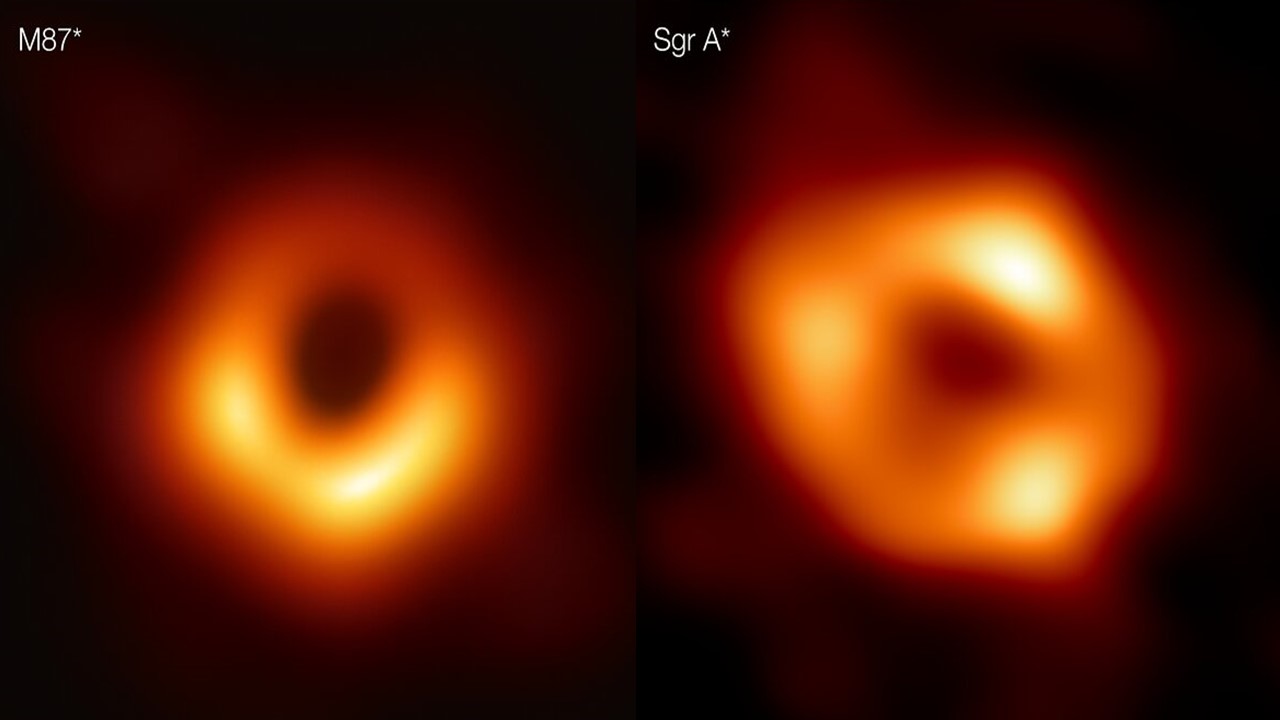
Take a close look at the two black hole images and you can ascertain a few differences by your own. Notice the speed of accretion disk, which is a gas-like flow around the black hole. Or the size of dark spots in the center that give you a faint idea of the black hole event horizon.
The latest image by event horizon telescope is that of Sagittarius A*, a black hole in the center of our Milky Way galaxy. That this is a supermassive black hole was first recognized by physicists Reinhard Genzel and Andrea Ghez, for which they won the Nobel Prize in 2020.
Event horizon telescope or EHT is a worldwide network of radio telescopes that took the first ever picture of a black hole in 2019. It was that of M87*, an enormous supermassive black hole in the heart of Messier 87 galaxy in the constellation Virgo.
While the two black hole pictures look almost similar, for the laws of physics that govern their behavior are the same, the new image is more exciting than before. For one, it is located in our neighborhood; and second, it was way too difficult to catch a glimpse of.
1. Schwarzschild radius: It is the size of the sphere from which even light will fail to escape. For supermassive M87* this is 18 billion km, four times the radius of our solar system! For Sgr A*, Schwarzschild radius is only 12 million km.
2. Relative size: Our black hole is 31 times wider than the Sun, as shown in the figure below. Whereas the black hole in Messier 87 is 27,000 times wider than the Sun. If Sgr A* was the size of a doughnut, then M87* would be the size of a football stadium.

3. Distance: Our neighborhood black hole Sagittarius A* is obviously closer, located 25,000 light years away from the earth. Whereas M87* is 55 million light years away! So if it took 1 hour to get to Sgr A*, then it would take 91 days to reach M87*.
Despite being closer, observing Sgr A* was more challenging than expected. Scientists had to look through the galactic plane and filter out the noise from intermediate stars and dust clouds in their data, collected across continents.
4. Mass: M87* is 6 billion times more massive than the Sun whereas Sgr A* weighs 4 million Suns. Thus, our black hole Sgr A* is 1500 lighter in comparison.
5. Speed: Around the black hole is a bright ring of materials that swirl at great velocities. The material disk of M87* rotates over a course of many days at roughly 1,000 km/s, while it takes only a few minutes for material to move around Sagittarius A* because it is much smaller.
Why is the picture of our black hole kind of blurry? One of the reasons is that we don't have a direct view of the object while sitting on one of the arms of the galaxy and secondly, its accretion disk is spinning very fast compared to M87* so it's like taking a picture of a toddler who cannot stand still.






 Physics, astronomy and science history blog for students
Physics, astronomy and science history blog for students
Responsive Ad Slot